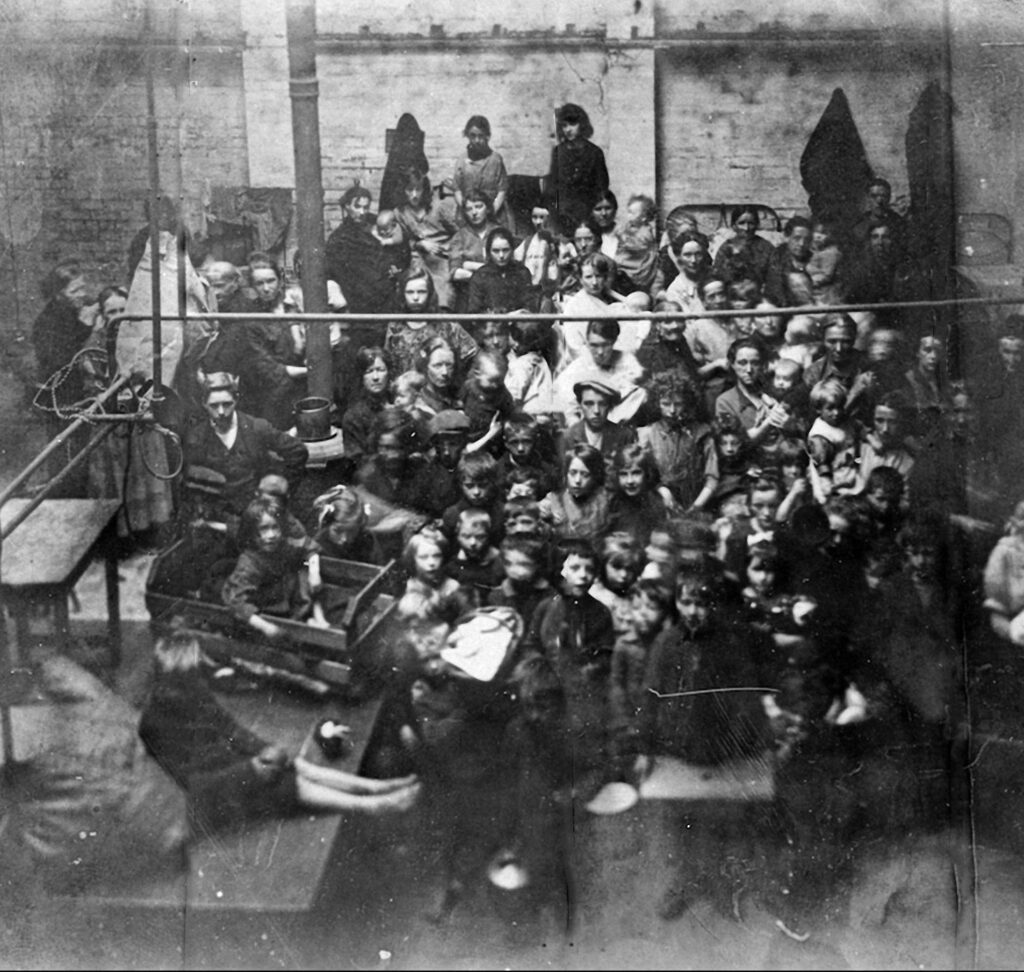By Fiona Fitzsimons

The Famine years saw a substantial increase in the number of unaccompanied children in Irish workhouses. The consequent crisis in childcare prompted a public debate over whether Poor Law children should be raised in an institutional or a family setting. Although boarding out delivered better outcomes for children, it was never widely adopted and remained a minority practice.
Even before the crisis of the Famine the number of child inmates in Irish workhouses was significant. In the first quarter of 1844 there were 22,585 children, about 50% of the total workhouse population. By 1850 the number of children had risen to 120,000, or about 60% of the total. In the second half of the century the number of children in workhouses fell slowly. By the early twentieth century children made up 14% of workhouse inmates.
The Poor Law Amendment Act (1862) gave boards of guardians the power to place orphan and foundling children to nurse up to the age of five years, extending out to eight years ‘for the … child’s health’. The Orphan and Deserted Children (Ireland) Bill (1875) extended the upper age limit to thirteen, and established a set of protocols to regulate fostering. Children could only be placed with their co-religionists; would be kept clean, clothed and lodged; and should be free to attend school and church, with access to medical care. Would-be foster-parents had to provide references; their homes were inspected before a child was placed in their care. The Poor Law Act (1889) gave the fullest upper age limit as sixteen years for young men and eighteen for young women.
Within the first decade it was evident that boarding out provided better outcomes. Children could be reintegrated into the community, and there were significantly fewer deaths. It is curious to compare two sets of data recorded in 1862–72 by the Tralee and Cork Poor Law unions. Tralee kept all its child inmates in the workhouse and returned a child mortality rate of over 97%. Cork by comparison adopted ‘boarding out’ and returned a child mortality rate of 5%.
The Local Government (Ireland) Act (1898) transferred responsibility for Poor Law children from the union guardians to the elected urban and rural district councils. The Local Government Board adopted a more proactive policy than the Poor Law Commissioners had. In 1907, boards of guardians were directed to ‘keep every pauper child outside the workhouse’. Guardians of large urban unions were advised to keep a record of all children eligible to be boarded out so that a full report could be given to the boarding-out committee. Dublin and Cork city workhouses were exempted from the act. Between 1899 and 1924, the boards of guardians in Dublin and Cork cities continued to be responsible for Poor Law children.
Parliamentary reports contain a return of healthy infants sent out to nurse by boards of guardians in Ireland in 1872–4. From the 1840s to 1898 all decisions concerning boarded-out children were made at board level, and were recorded in the board of guardians’ minutes of the relevant Poor Law union. The Dublin and Cork city workhouses continued to make decisions for children/young people up to 1924. After 1898, responsibility for boarded-out children in all other unions was transferred from the local guardians to the county council. Councils kept books of boarded-out children as a distinct class of records. Most of these annual volumes survive and have been transferred to the local county library/archive. Public access to these sensitive records is restricted.
Fiona Fitzsimons is a director of Eneclann, a Trinity campus company, and of findmypast Ireland.
